
Zugspitze: The Pinnacle of Germany's Alpine Majesty
Discover Zugspitze, Germany's highest peak, offering breathtaking views, thrilling alpine adventures, and a winter wonderland of skiing and snowboarding opportunities.
Standing tall as Germany's highest peak, Zugspitze offers an unparalleled alpine adventure. Nestled in the Bavarian Alps, this majestic mountain reaches an elevation of 2,962 meters. Visitors are treated to breathtaking panoramic views that stretch across four countries: Germany, Austria, Switzerland, and Italy. This makes Zugspitze a must-visit for nature lovers and photography enthusiasts alike. Zugspitze is accessible via a variety of routes, including the scenic Bayerische Zugspitzbahn cogwheel train and the Eibsee-Seilbahn cable car. For those seeking a thrill, there are also numerous hiking and climbing paths that cater to various skill levels. In winter, Zugspitze transforms into a snowy wonderland, offering excellent skiing and snowboarding opportunities. The glacier skiing area promises reliable snow conditions and a range of slopes suitable for all abilities. At the summit, visitors can explore a range of attractions, including the Zugspitze Glacier, the Zugspitze Museum, and the stunning panorama platform. The summit also houses several dining options, where you can enjoy traditional Bavarian cuisine while soaking in the magnificent views. Whether you're an adrenaline junkie or someone who enjoys a leisurely day in the mountains, Zugspitze provides a memorable experience for everyone.
Local tips in Zugspitze
- Check the weather forecast before you go; conditions can change rapidly at high altitudes.
- Arrive early to avoid crowds, especially during peak tourist seasons.
- Wear layered clothing to adapt to the changing temperatures at different elevations.
- Consider purchasing a round-trip ticket for the cogwheel train or cable car for a hassle-free experience.
- Don't forget to bring sunscreen and sunglasses; the sun's rays are stronger at higher altitudes.
- Explore the different dining options at the summit for a taste of local Bavarian cuisine.
- If you're planning to hike, make sure to bring proper gear and check the difficulty level of trails.
Zugspitze: The Pinnacle of Germany's Alpine Majesty
Standing tall as Germany's highest peak, Zugspitze offers an unparalleled alpine adventure. Nestled in the Bavarian Alps, this majestic mountain reaches an elevation of 2,962 meters. Visitors are treated to breathtaking panoramic views that stretch across four countries: Germany, Austria, Switzerland, and Italy. This makes Zugspitze a must-visit for nature lovers and photography enthusiasts alike. Zugspitze is accessible via a variety of routes, including the scenic Bayerische Zugspitzbahn cogwheel train and the Eibsee-Seilbahn cable car. For those seeking a thrill, there are also numerous hiking and climbing paths that cater to various skill levels. In winter, Zugspitze transforms into a snowy wonderland, offering excellent skiing and snowboarding opportunities. The glacier skiing area promises reliable snow conditions and a range of slopes suitable for all abilities. At the summit, visitors can explore a range of attractions, including the Zugspitze Glacier, the Zugspitze Museum, and the stunning panorama platform. The summit also houses several dining options, where you can enjoy traditional Bavarian cuisine while soaking in the magnificent views. Whether you're an adrenaline junkie or someone who enjoys a leisurely day in the mountains, Zugspitze provides a memorable experience for everyone.
When is the best time to go to Zugspitze?
Iconic landmarks you can’t miss
Partnachklamm
Explore the stunning Partnachklamm gorge in Garmisch-Partenkirchen, a breathtaking hiking area and scenic spot that showcases the beauty of the Bavarian Alps.

Seilbahn Zugspitze
Discover the breathtaking heights of Zugspitze with a scenic cable car ride to Germany's highest peak, surrounded by stunning alpine vistas.
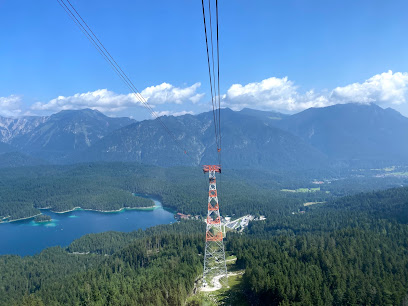
Zugspitze (Bayerische Zugspitzbahn Bergbahn AG) - The modern Cable car
Discover the breathtaking beauty of Zugspitze, Germany's highest peak, with stunning views, outdoor adventures, and Bavarian charm.

Tyrolean Zugspitze Cable Car
Explore the stunning Tyrolean Zugspitze Cable Car for breathtaking views and year-round adventures in the heart of the Austrian Alps.

Alpspix
Discover the breathtaking views and thrilling adventures at Alpspix, the stunning viewing platform in the Bavarian Alps.

Wankbahn
Experience breathtaking views and thrilling rides at Wankbahn, the scenic cable car in Garmisch-Partenkirchen, offering access to the stunning Bavarian Alps.

Zugspitzplatt
Experience the breathtaking beauty and thrilling adventures at Zugspitzplatt, Germany's highest ski resort nestled in the Bavarian Alps.

Munich's Haus on the Zugspitze
Experience the breathtaking views and Bavarian hospitality at Munich's Haus on the Zugspitze, Germany's highest mountain retreat.

Burgruine Werdenfels
Explore Burgruine Werdenfels, a historical gem near Garmisch-Partenkirchen, perfect for hiking enthusiasts and history lovers alike.

Alpspitze
Experience breathtaking views and exhilarating outdoor adventures at Alpspitze, the iconic peak of the Bavarian Alps, perfect for nature lovers and adventurers.
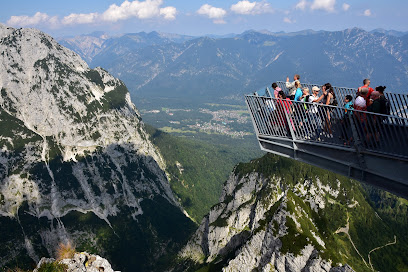
Gipfelkreuz Zugspitze
Gipfelkreuz Zugspitze offers breathtaking views, thrilling hikes, and a unique alpine experience atop Germany's highest peak.
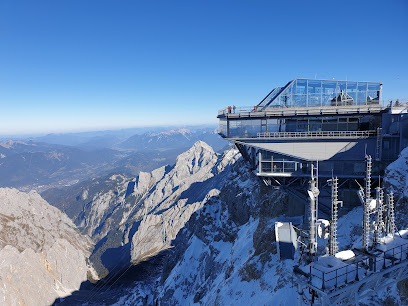
Kramerspitz
Explore the breathtaking views from Kramerspitz, an iconic observation deck in the Bavarian Alps, perfect for nature lovers and photography enthusiasts.

Mariä Heimsuchung
Discover the serene beauty and spiritual tranquility of Mariä Heimsuchung, a captivating chapel nestled in the breathtaking Bavarian Alps.

Schneefernerhaus
Experience the breathtaking beauty and scientific marvels at Schneefernerhaus, an essential stop for every tourist in the Bavarian Alps.

Südportal Kramertunnel
Discover the stunning Süportal Kramertunnel in Garmisch-Partenkirchen, a gateway to breathtaking hikes and the beauty of the Bavarian Alps.

Unmissable attractions to see
Neuschwanstein Castle
Experience the magic of Neuschwanstein Castle, a stunning fairytale landmark nestled in the Bavarian Alps, rich in history and breathtaking views.

Partnachklamm
Explore the stunning Partnachklamm gorge in Garmisch-Partenkirchen, where breathtaking views and serene hiking trails await nature lovers.

Alpspix
Discover the breathtaking views at Alpspix, a stunning viewpoint in the Bavarian Alps, perfect for adventure seekers and nature lovers alike.

Festspielhaus Neuschwanstein
Experience world-class performances in the heart of Füssen, surrounded by the breathtaking beauty of the Bavarian Alps at Festspielhaus Neuschwanstein.

Museum of the Bavarian Kings
Explore the rich history of Bavaria at the Museum of the Bavarian Kings, where royal stories and stunning views come together in an unforgettable experience.

Munich's Haus on the Zugspitze
Discover the scenic beauty and warm hospitality of Munich's Haus on the Zugspitze, a mountain cabin retreat offering breathtaking alpine vistas and outdoor adventures.

Münter - House
Explore the artistic legacy of Gabriele Münter at Münter-Haus, a stunning museum in Murnau am Staffelsee surrounded by breathtaking Bavarian landscapes.

Burgruine Werdenfels
Discover the medieval charm and stunning Alpine views at Burgruine Werdenfels, a historical landmark in the heart of the Bavarian Alps.

Höllentalklamm Museum
Explore the captivating beauty and cultural heritage of the Bavarian Alps at Höllentalklamm Museum, a unique destination for nature lovers and history enthusiasts alike.

Alpseebad Hohenschwangau
Experience the magical beauty of Alpseebad Hohenschwangau, a serene swimming lake surrounded by majestic alpine landscapes in Bavaria, Germany.

Pöllat Gorge Schwangau
Experience the stunning beauty of Pöllat Gorge in Schwangau, a hiking haven with breathtaking views and rich natural wonders.

Museum Werdenfels
Explore the rich cultural heritage of Bavaria at Museum Werdenfels, where local history comes alive through captivating exhibits and artifacts.

Kramerspitz
Experience breathtaking views and serene trails at Kramerspitz, the pinnacle of Garmisch-Partenkirchen's natural beauty.

Historische Olympia Bobbahn am Riessersee - Bobmuseum (Bobschuppen)
Explore the Historic Olympia Bobbahn in Garmisch-Partenkirchen, a must-visit museum and attraction for winter sports enthusiasts and history lovers alike.

Cafe-Bistro at Neuschwanstein Castle
Discover the delightful Cafe-Bistro at Neuschwanstein Castle, where Bavarian flavors meet breathtaking views in a fairy-tale setting.

Essential places to dine
Rasthaus Zugspitzblick
Savor exquisite flavors with stunning views at Rasthaus Zugspitzblick in Biberwier - an alpine dining experience like no other.

Zum Wildschütz
Experience authentic Bavarian cuisine at Zum Wildschütz in Garmisch-Partenkirchen - where tradition meets flavor.

seeRestaurant EIBSEE Pavillon
Discover culinary delights at EIBSEE Pavillon with stunning lake views and delicious Bavarian dishes in Grainau.

Bräustüberl Garmisch
Experience authentic Bavarian flavors at Bräustüberl Garmisch – where tradition meets taste in the heart of Garmisch-Partenkirchen.

Bungalow 7
Discover the vibrant flavors of America at Bungalow 7 in Garmisch-Partenkirchen – where every meal is a celebration.
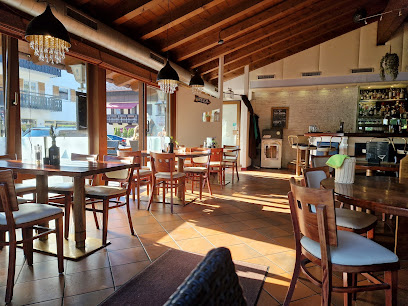
Gaststätte Flößerstube
Discover authentic Bavarian cuisine at Gaststätte Flößerstube in Garmisch-Partenkirchen – where tradition meets taste in every dish.

Spatzenhäus'l - Renate Hofer
Experience authentic Bavarian cuisine at Spatzenhäus'l in Grainau with stunning views of Zugspitze mountain.

Gletscherrestaurant Sonnalpin
Experience exquisite alpine dining at Gletscherrestaurant Sonnalpin with breathtaking views and delightful local cuisine atop Zugspitze.
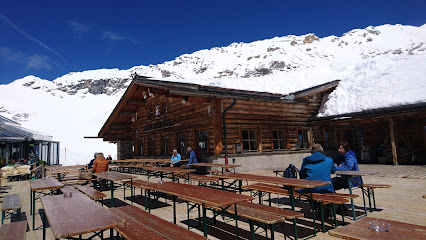
Berggasthof Almhütte
Experience authentic Bavarian cuisine at Berggasthof Almhütte with stunning mountain views in Garmisch-Partenkirchen.

Wolpertinger
Experience authentic Bavarian cuisine at Wolpertinger in Garmisch-Partenkirchen – where tradition meets taste in every bite.

Panorama Lounge 2962
Experience exquisite dining with stunning alpine views at Panorama Lounge 2962 on Zugspitze – a top destination for tourists seeking adventure and flavor.

Sonnenalm
Discover Sonnenalm: A Bavarian restaurant offering authentic German cuisine with breathtaking alpine views in Garmisch-Partenkirchen.

Toni Alm
Experience authentic Bavarian cuisine amidst stunning mountain vistas at Toni Alm in Garmisch-Partenkirchen.

Schmölzer Wirt
Discover authentic Bavarian flavors at Schmölzer Wirt - where tradition meets exceptional dining in Grainau's scenic landscape.
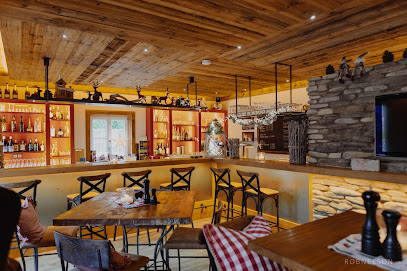
Mukkefukk
Discover Mukkefukk: A charming bistro in Garmisch-Partenkirchen serving delicious local cuisine and refreshing drinks amidst stunning alpine views.

Markets, malls and hidden boutiques
Garmisch PX
Discover Garmisch PX, your go-to clothing store in Garmisch-Partenkirchen, blending local style with international flair amidst stunning alpine scenery.
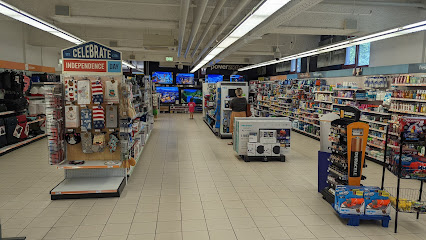
c a, C&A Stores nearby Garmisch-Partenkirchen
Explore C&A in Garmisch-Partenkirchen for stylish and affordable clothing options for the whole family amidst stunning alpine scenery.

Mountain Warehouse
Explore Garmisch-Partenkirchen with top-quality outdoor gear from Mountain Warehouse - your adventure starts here.

Kult- Garmisch
Explore the chic side of Garmisch-Partenkirchen at Kult-Garmisch, your go-to destination for stylish denim and unforgettable shopping experiences.

The Dram Shop | Whisky & Gin
Explore a world of fine whiskies and gins at The Dram Shop in Garmisch-Partenkirchen, your ultimate destination for artisanal spirits.

Anne S. Boutique
Explore the heart of fashion in Garmisch-Partenkirchen at Anne S. Boutique, where style meets alpine charm.

NEW YORKER
Explore the vibrant fashion scene at NEW YORKER in Garmisch-Partenkirchen, offering a diverse selection of trendy clothing and accessories for all ages.

Sorge
Explore Sorge, the charming souvenir store in Garmisch-Partenkirchen, offering authentic Bavarian crafts and unique gifts for every traveler.

Sophieplus
Discover unique souvenirs and exquisite tea blends at Sophieplus in Garmisch-Partenkirchen, a paradise for tea lovers and travelers alike.

See-Kiosk Souvenirs
Explore a charming souvenir store at Eibsee, where unique Bavarian gifts and local treasures await to commemorate your unforgettable visit.

Marc O'Polo
Explore contemporary alpine fashion at Marc O'Polo, Garmisch-Partenkirchen's go-to destination for stylish men's and women's clothing.
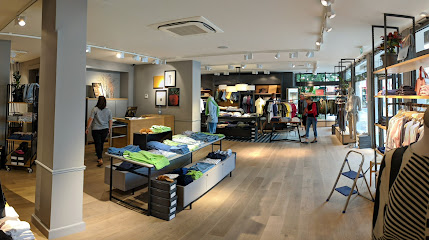
The North Face Garmisch
Discover adventure in Garmisch-Partenkirchen with The North Face – your ultimate destination for premium outdoor clothing and sportswear.

Sternchen Boutique
Discover unique fashion at Sternchen Boutique in Garmisch-Partenkirchen, where style meets local charm in a stunning alpine setting.

Alpenwelt Garmisch
Explore Alpenwelt Garmisch: A unique gift shop and art gallery in Garmisch-Partenkirchen, offering local art, souvenirs, and Bavarian craftsmanship.

Griaß di - Dekoration, Geschenke, Souvenir
Explore Griaß di in Ehrwald for unique gifts and souvenirs that celebrate the beauty and culture of Austria.

Essential bars & hidden hideouts
Gletscherrestaurant Sonnalpin
Experience alpine dining with stunning views at Gletscherrestaurant Sonnalpin on Zugspitze, where culinary delights meet breathtaking mountain scenery.

Panorama Lounge 2962
Experience the culinary delights and stunning alpine vistas at Panorama Lounge 2962 on Zugspitze, Germany's highest peak.

Sausalitos
Experience authentic Mexican flavors and vibrant ambiance at Sausalitos in Garmisch-Partenkirchen, where every meal is a fiesta.

The Irish Pub
Discover the heartwarming charm of The Irish Pub in Garmisch-Partenkirchen, where hearty meals and fine beers await in a cozy ambience.

Winelounge
Discover the elegance of Winelounge in Lermoos, where exceptional wines and delightful cuisine create a perfect alpine dining experience.

Peaches Cocktailbar
Discover Peaches Cocktailbar in Garmisch-Partenkirchen, where innovative cocktails and a vibrant atmosphere create the perfect nightlife experience.
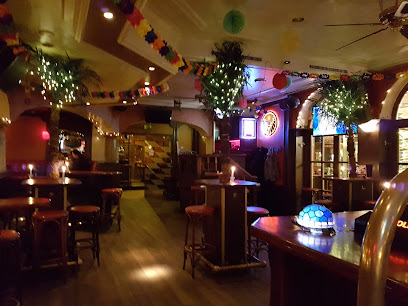
Pub 33
Discover the lively ambiance and delicious brews at Pub 33 in Garmisch-Partenkirchen, a perfect spot for relaxation and socializing after exploring the Alps.

The Local Cure Lounge Bar
Experience the warmth of Bavarian hospitality at The Local Cure Lounge Bar, a must-visit spot for drinks and light bites in Garmisch-Partenkirchen.

IRISH PUB, The Caledonian
Discover The Caledonian, a cozy Irish pub in Ehrwald, offering hearty meals, a vibrant atmosphere, and stunning mountain views.

Servus Musicbar
Experience the vibrant nightlife at Servus Musicbar, where music, drinks, and a lively atmosphere create unforgettable memories in Garmisch-Partenkirchen.

Jan's Kneipe
Experience authentic Bavarian hospitality at Jan's Kneipe, a cozy pub and restaurant in Garmisch-Partenkirchen with local dishes and a warm atmosphere.
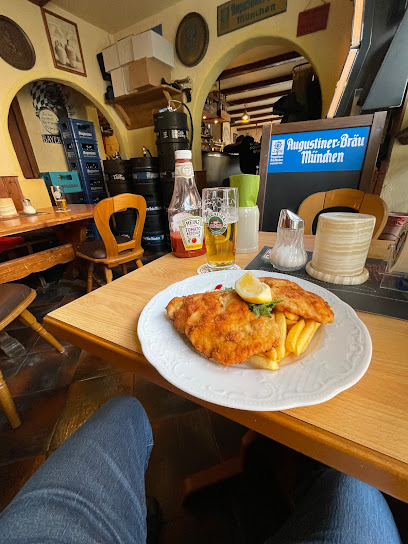
Cuatro Hombres
Discover the charm of Cuatro Hombres, a cozy bar in Garmisch-Partenkirchen offering a diverse drink selection and welcoming ambiance.

Bieraterie - Die Bar
Experience the best of craft beers at Bieraterie - Die Bar in Garmisch-Partenkirchen, a must-visit for beer enthusiasts and tourists alike.

Südtiroler Speckstüberl Mayr Andreas
Experience authentic South Tyrolean cuisine at Südtiroler Speckstüberl Mayr Andreas, a cozy bar in the heart of Garmisch-Partenkirchen.

Hackerstüberl
Experience the charm of Hackerstüberl, a delightful beer garden in Garmisch-Partenkirchen, serving local brews and Bavarian cuisine amidst stunning alpine views.

Local Phrases about Zugspitze
-
- HelloHallo
[ha-lo] - GoodbyeAuf Wiedersehen
[owf vee-der-zay-en] - YesJa
[yah] - NoNein
[nine] - Please/You're welcomeBitte
[bit-teh] - Thank youDanke
[dahn-kuh] - Excuse me/SorryEntschuldigung
[ent-shool-di-gung] - How are you?Wie geht es Ihnen?
[vee get es een-en] - Fine. And you?Gut. Und Ihnen?
[goot oont een-en] - Do you speak English?Sprechen Sie Englisch?
[shpre-khen zee eng-leesh] - I don't understandIch verstehe nicht
[ikh fer-shtey-e neekt]
- HelloHallo
-
- I'd like to see the menu, pleaseIch möchte bitte die Speisekarte sehen
[ikh merkhte bit-te dee shpi-se-kahr-teh zay-en] - I don't eat meatIch esse kein Fleisch
[ikh es-se kine flysh] - Cheers!Prost!
[prohst] - I would like to pay, pleaseIch möchte bitte zahlen
[ikh merkhte bit-te tsah-len]
- I'd like to see the menu, pleaseIch möchte bitte die Speisekarte sehen
-
- Help!Hilfe!
[hil-feh] - Go away!Gehen Sie weg!
[ge-en zee vehg] - Call the Police!Rufen Sie die Polizei!
[roo-fen zee dee poh-lee-tsye] - Call a doctor!Rufen Sie einen Arzt!
[roo-fen zee i-nen ahrts] - I'm lostIch habe mich verirrt
[ikh hah-beh meekh fe-ri-rt] - I'm illMir ist schlecht
[meer ist shlekt]
- Help!Hilfe!
-
- I'd like to buy...Ich möchte kaufen...
[ikh merkhte kow-fen] - I'm just lookingIch schaue nur
[ikh shou-e noor] - How much is it?Wie viel kostet es?
[vee feel kos-tet es] - That's too expensiveDas ist zu teuer
[dahs ist tsoo toy-er] - Can you lower the price?Können Sie den Preis senken?
[koon-en zee den prees sen-ken]
- I'd like to buy...Ich möchte kaufen...
-
- What time is it?Wie spät ist es?
[vee shpet ist es] - It's one o'clockEs ist ein Uhr
[es ist iyn oor] - Half past (10)Halb zehn
[halb tsehn] - MorningMorgen
[mor-gen] - AfternoonNachmittag
[nahk-mit-tahk] - EveningAbend
[ah-bent] - YesterdayGestern
[ge-shtern] - TodayHeute
[hoi-teh] - TomorrowMorgen
[mor-gen] - 1Eins
[iyns] - 2Zwei
[tsvay] - 3Drei
[dry] - 4Vier
[feer] - 5Fünf
[fuhnf] - 6Sechs
[zeks] - 7Sieben
[zee-ben] - 8Acht
[ahkt] - 9Neun
[noyn] - 10Zehn
[tsehn]
- What time is it?Wie spät ist es?
-
- Where's a/the...?Wo ist ein/der...?
[vo ist iyn/dehr] - What's the address?Was ist die Adresse?
[vas ist dee ah-dreh-seh] - Can you show me (on the map)?Können Sie mir das zeigen (auf der Karte)?
[koon-en zee meer dahs tsee-gen (owf dehr kar-teh)] - When's the next (bus)?Wann kommt der nächste (Bus)?
[van kommt dehr nehk-steh (boos)] - A ticket (to ....)Eine Fahrkarte (nach ...)
[i-ne fahr-kahr-teh (nahkh ...)]
- Where's a/the...?Wo ist ein/der...?
History of Zugspitze
-
The Zugspitze, the highest peak in Germany, stands at 2,962 meters (9,718 feet) and is part of the Northern Limestone Alps. It was formed over millions of years through the collision of the African and Eurasian tectonic plates. The area is characterized by its rugged limestone features and glacial valleys, making it a geologist's paradise.
-
Archaeological evidence suggests that the area around the Zugspitze was inhabited as early as the Bronze Age. Artifact discoveries, such as tools and pottery, indicate that early human settlers either lived in or traversed this mountainous region. The harsh climate and rugged terrain made permanent settlements challenging, but the area was likely used for hunting and gathering.
-
The first recorded ascent of the Zugspitze was achieved on August 27, 1820, by a team led by Lieutenant Josef Naus, a cartographer with the Bavarian army. Accompanied by his survey assistant Maier and mountain guide Johann Georg Tauschl, Naus reached the summit after a demanding climb. This event marked the beginning of a long history of mountaineering on the Zugspitze.
-
In the early 20th century, efforts to make the Zugspitze more accessible led to the construction of the Zugspitze Railway. Completed in 1930, the cogwheel train climbs from the town of Garmisch-Partenkirchen to the Zugspitze plateau. This engineering marvel significantly boosted tourism, allowing more people to experience the breathtaking views from Germany's highest peak.
-
During World War II, the Zugspitze region saw military activity, including the construction of a weather station by the German Wehrmacht. The station provided crucial meteorological data for military operations. Additionally, the area was used for training mountain troops due to its challenging terrain and harsh conditions.
-
Today, the Zugspitze is a major tourist destination, attracting visitors year-round. The opening of the Eibsee Cable Car in 1963 and the subsequent development of ski facilities transformed the area into a popular ski resort. The Zugspitze Glacier offers skiing and snowboarding opportunities from autumn to late spring, making it a hub for winter sports enthusiasts.
-
The Zugspitze holds significant cultural value for the Bavarian people. It is not only a symbol of natural beauty but also a source of regional pride. Traditional Bavarian festivals and events, such as the annual Zugspitze Oktoberfest, celebrate the area's rich heritage. The mountain also features in local folklore and literature, further cementing its place in Bavarian culture.
Zugspitze Essentials
-
Zugspitze, Germany's highest peak, is accessible from Garmisch-Partenkirchen. The nearest major airport is Munich International Airport (MUC), approximately 130 kilometers away. From Munich, travelers can take a direct train to Garmisch-Partenkirchen, which takes about 1.5 hours. From Garmisch-Partenkirchen, the Bayerische Zugspitzbahn cogwheel train or the Eibsee cable car will take you up to the summit.
-
Garmisch-Partenkirchen, the gateway town to Zugspitze, offers a well-connected public transport system including buses and trains. The town is walkable, and local buses connect to nearby attractions. For the ascent to Zugspitze, options include the cogwheel train from Garmisch-Partenkirchen or the cable car from Eibsee. Renting a car is also an option, but parking can be limited and expensive.
-
The official currency in Germany is the Euro (EUR). Credit and debit cards are widely accepted, but it is advisable to carry some cash, especially for small purchases or in rural areas. ATMs are available in Garmisch-Partenkirchen and at the Zugspitze facilities. Tipping is customary in restaurants, typically around 5-10%.
-
Zugspitze and Garmisch-Partenkirchen are generally safe for tourists. However, standard precautions should be taken to avoid petty theft. Keep an eye on personal belongings, especially in crowded areas. There are no specific high-crime areas targeting tourists, but it is always best to stay vigilant and aware of your surroundings.
-
In case of emergency, dial 112 for immediate assistance. Garmisch-Partenkirchen has a well-equipped hospital, and there are medical facilities at the base and summit of Zugspitze. It is recommended to have travel insurance that covers medical emergencies and mountain rescue. For minor health issues, pharmacies are available in Garmisch-Partenkirchen.
-
Fashion: Do wear appropriate clothing for mountain conditions, including layers and sturdy footwear. Avoid wearing sandals or flip-flops on hiking trails. Religion: Do respect local customs, although Zugspitze is not a religious site. Public Transport: Do validate your ticket before boarding trains and buses. Don’t eat or drink on public transport. Greetings: Do greet people with a friendly 'Guten Tag' or 'Grüß Gott'. A handshake is customary. Eating & Drinking: Do try local Bavarian delicacies. Don’t rush your meal; enjoy the leisurely pace of dining.
-
To experience Zugspitze like a local, consider visiting in the early morning or late afternoon to avoid the tourist rush. Take time to explore the lesser-known trails and viewpoints. Enjoy a meal at one of the mountain huts, where you can savor traditional Bavarian cuisine. If visiting in winter, take advantage of the excellent skiing and snowboarding facilities. Don’t miss the opportunity to ride the Gletscherbahn cable car for stunning views.
Trending Landmarks in Zugspitze
-
Partnachklamm
-
Seilbahn Zugspitze
-
Zugspitze (Bayerische Zugspitzbahn Bergbahn AG) - The modern Cable car
-
Tyrolean Zugspitze Cable Car
-
Alpspix
-
Wankbahn
-
Zugspitzplatt
-
Munich's Haus on the Zugspitze
-
Burgruine Werdenfels
-
Alpspitze
-
Gipfelkreuz Zugspitze
-
Kramerspitz
-
Mariä Heimsuchung
-
Schneefernerhaus
-
Südportal Kramertunnel
Nearby Cities to Zugspitze
-
Things To Do in St. Anton am Arlberg
-
Things To Do in Munich
-
Things To Do in Dornbirn
-
Things To Do in Bregenz
-
Things To Do in Kitzbühel
-
Things To Do in Schellenberg
-
Things To Do in Ruggell
-
Things To Do in Davos
-
Things To Do in Mauren
-
Things To Do in Eschen
-
Things To Do in Triesenberg
-
Things To Do in Gamprin
-
Things To Do in Schaan
-
Things To Do in Vaduz
-
Things To Do in Balzers









